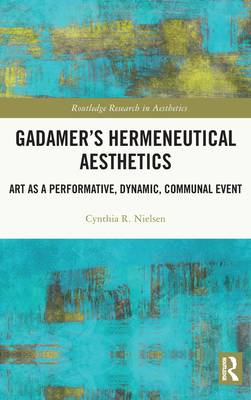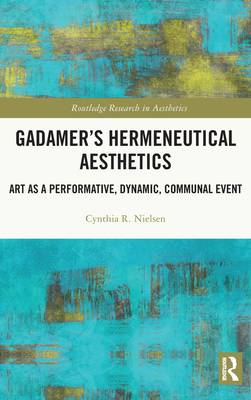
- Retrait gratuit dans votre magasin Club
- 7.000.000 titres dans notre catalogue
- Payer en toute sécurité
- Toujours un magasin près de chez vous
- Retrait gratuit dans votre magasin Club
- 7.000.0000 titres dans notre catalogue
- Payer en toute sécurité
- Toujours un magasin près de chez vous
Description
This book offers a sustained scholarly analysis of Gadamer's reflections on art and our experience of art. It examines fundamental themes in Gadamer's hermeneutical aesthetics such as play, festival, symbol, contemporaneity, enactment, art's performative ontology, and hermeneutical identity.
The first two chapters focus on Gadamer's critical appropriation and movement beyond Kantian and Hegelian aesthetics. (Chapter 2 also includes a coda on Heidegger's influence.) The final three chapters argue for the continued relevance of Gadamer's hermeneutical aesthetics by bringing his claims into conversation with contemporary art and music, as well as the ethical and sociopolitical dimensions of the Artworld and art praxis. The ethical and sociopolitical aspects of art- and music-making are given particular attention in chapters devoted to 20th-century African American artist Romare Bearden, Banksy's street art, and a range of jazz expressions, from traditional jazz to the complex practice of free jazz.
Gadamer's Hermeneutical Aesthetics will appeal to researchers and advanced students working on Gadamer, philosophical hermeneutics, continental philosophy, aesthetics, and the philosophy of contemporary art and music.
Spécifications
Parties prenantes
- Auteur(s) :
- Editeur:
Contenu
- Nombre de pages :
- 164
- Langue:
- Anglais
- Collection :
Caractéristiques
- EAN:
- 9781032020372
- Date de parution :
- 14-10-22
- Format:
- Livre relié
- Format numérique:
- Genaaid
- Dimensions :
- 152 mm x 229 mm
- Poids :
- 403 g

Les avis
Nous publions uniquement les avis qui respectent les conditions requises. Consultez nos conditions pour les avis.






